Gurudwara Manji Sahib was constructed at the place where the sixth Guru stayed during his visit to Ambala city. The grand building of the Gurudwara is located on the G.T. Road (Sher Shah Suri Marg). The devotees visit this shrine to have a dip in the tank nearby. They also take Amrit from the Baoli constructed by the sixth Guru, during his stay here. Gurdwara Baoli Sahib or Gurdwara Manji Sahib - Guru Hargobind is said to have stayed here overnight while on his way to meet emperor Jahangir. |
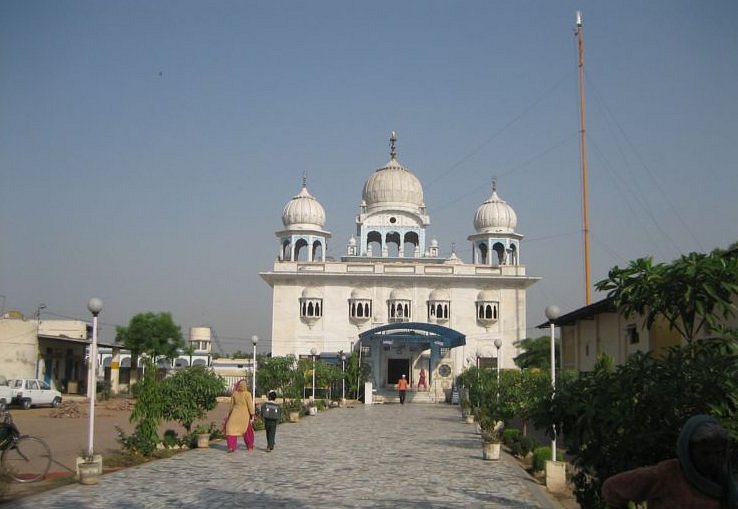 |
St Paul's Church in Ambala Cantonment is one of the oldest churches in the region. St Paul's church, which was consecrated on January 4, 1857, was bombed during the 1965 Indo-Pak war. The bombing by a Pakistani aircraft considerably destroyed the beautiful church building and today only the church tower remains. The St Paul’s church sustained extensive damage due to the bombing. Since then, a portion of the parsonage is being consecrated and used as church. Previously, the church compound was spread over 21 acres of land and now a large area has been acquired by the Air Force authorities for a school and other purposes. |
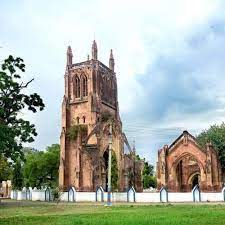 |
The Jain Temple is located in Jain Mohalla in Ambala district.This shrine houses four main idols of Jain deities and was established about 150 years ago according to mentions in folklore. The four idols include that of God Chandraprabha, Parshavnath, Arihant, and Shatinath. Chandraprabha was the eighth Tirthankara (Sanskrit for an omnipresent Jain Teaching God preaching Dharma) of Avasarpini or present half cycle according to Jain cosmology. |
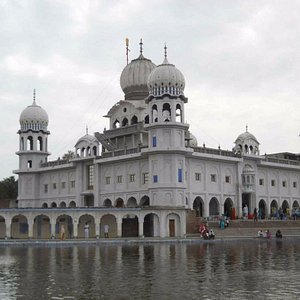 |
Ambika Devi Temple is the oldest temples in Ambala and is associated with the origin of the place as it is believed that Ambala derived its name from Goddess Bhawani Ambika which is said to be an incarnation of Durga. This old temple is dedicated to this deity and is located near the Old Civil Hospital. The temple was built before the British rule and houses the beautiful idols of the three deities Amba, Ambika and Ambalika. It is octagonal in shape with dome shaped roof. The most fascinating feature of the shrine is its beautiful paintings and carvings done on the walls and the roof. |
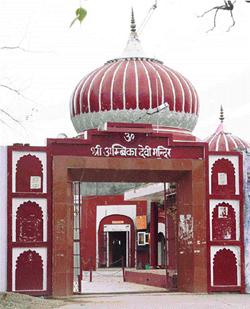 |
Rani Ka Talab is a 400 year old scenic and historic pond and is situated in Ambala Cant and is manned by the army. It is surrounded by Kailash Mandir and Indra Park for travellers to stroll around. Anand market, halwai bazaar, Indra market and the pond are also few of the places which are loved by travellers. Raja Ka Talab was also constructed along with Rani Ka Talab but now Raja Ka Talab has been carved out into a modern park known as Patel Park. During the British rule, it was called as Company Bagh. |
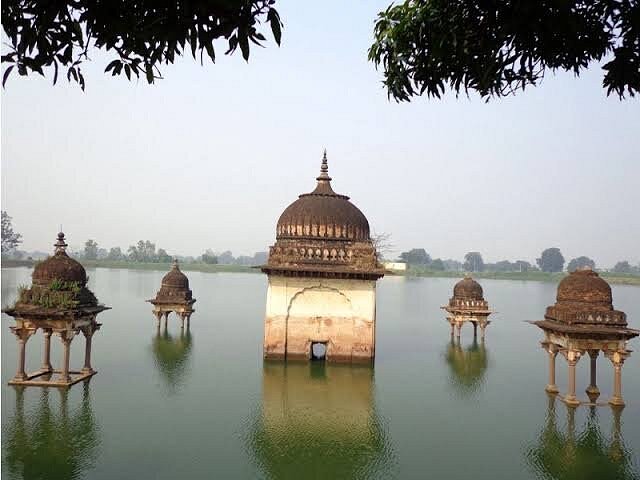 |
Brahma Sarovar: Every year lakhs of people come to take a holy bath at Brahma Sarovar on the occasion of 'Somavati Amavasya' (Sacred No-Moon Day that happens on a Monday) and on solar eclipse believing that a bath in holy sarovar frees all sins and cycle of birth-death. It is supposed to be the world's largest man-made pond.Jyotisar: The famous site where Bhagavad Gita was delivered to Arjuna under the tree. The tree of that time is the witness to Gita.Jyotisar Light and Sound Show: A newly built tourist attraction which highlights some aspects of Geeta Saar through lights and sound.Kurukshetra Panorama and Science Centre: A world-class panorama depicting the Mahabharata war with scientific explanations justifying every episode in the war. There are also several scientific exhibits designed to kindle a curiosity for science. |
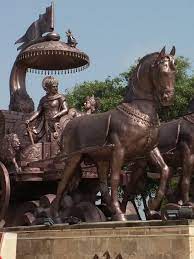 |
Chandigarh is a city and a union territory in India that serves as the capital of the two neighboring states of Haryana and Punjab. The city is unique in that it is not a part of either of the two states but is governed directly by the Union Government, which administers all such territories in the country.Every year, in September or October during the festival of Navrati, many associations and organisations hold a Ramlila event which has been conducted for over 50 years.The 'Rose Festival' in Zakir Hussain Rose Garden in February every year, shows thousands of subspecies of roses.The Mango Festival, held during the monsoons, and other festivals are held at Sukhna Lake. |
 |
Shimla is home to a number of buildings that are styled in the Tudorbethan and neo-Gothic architectures dating from the colonial era, as well as multiple temples and churches. The colonial architecture and churches, the temples and the natural environment of the city attracts tourists. Attractions include the Viceroy Lodge, the Christ Church, the Jakhoo Temple, the Mall Road and the Ridge, which together form the city centre. Jakhoo: 2 km from Shimla, at a height of 8,000 ft, Jakhu Hill is the highest peak and has views of the town and of the snow-covered Himalayas. At the top of the hill is an old temple of Lord Hanuman, which is the home of monkeys |
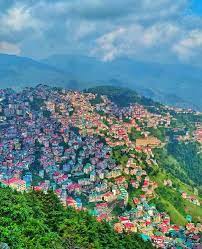 |
Amritsar is home to the Harmandir Sahib (commonly known as the Golden Temple), the spiritual and cultural centre for the Sikh religion. This important Sikh shrine attracts more visitors than the Taj Mahal with more than 100,000 visitors on weekdays alone and is the most popular destination for non-resident Indians (NRI) in the whole of India.The city also houses the Akal Takht Sahib, the highest seat of earthly authority of the Khalsa, and the committee responsible for the upkeep of Gurdwaras.The Ram Teerath situated at Amritsar is believed to be the Ashram site of Maharishi Valmiki, the writer of Ramayana. |
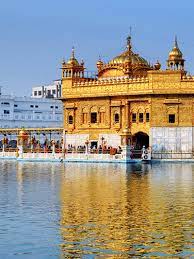 |
Nainital is a popular hill station in the Indian state of Uttarakhand and headquarters of Nainital district in the Kumaon foothills of the outer Himalayas.Nainital Lake, a natural freshwater body, situated amidst the township of Nainital in Uttarakhand State of India, tectonic in origin, is kidney shaped or crescent shaped and has an outfall at the southeastern end. From the tops of the higher peaks, magnificent views can be obtained of the vast plain to the south, or of the mass of tangled ridges lying north, bounded by the great snowy range which forms the central axis of the Himalayas. |
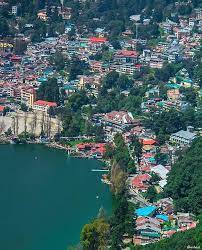 |